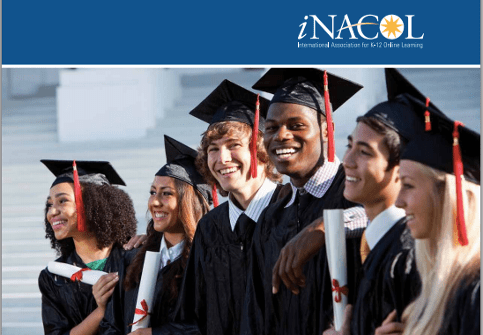Blended Learning Credit Recovery: Best Practices from iNACOL

Over the last decade, credit recovery strategies have boosted graduation rates, piloted blended learning strategies and demonstrated the benefits of allowing students to work at their own pace. There are hundreds of examples of effective programs– and others that make educators cringe.
In a new report, Using Online Learning for Credit Recovery: Getting Back on Track to Graduation, the International Association for K-12 Online Learning (iNACOL, a Getting Smart advocacy partner) identifies best practices in online and blended credit recovery programs.
Nearly 88% of U.S. school districts report offering some sort of credit recovery. Credit recovery is generally defined as replacing a missed or failed class, where as credit completion is defined as diagnosing or filling a gap in a course to allow for rapid completion. The report cautions taking fully online credit recovery courses. Often they have cheap software, have little teacher involvement and pass students without understanding their competency in subject matters. Below are important lessons learned through several schools and districts across the country offering variations of online and blended credit recovery courses.
The Importance of Competency Based Learning
Many times there are external reasons as to why a student may need to take a recovery course and may require a more in-depth understanding of where the student may need assistance. Competency based programs are bridging the gap from any external factors to a teacher’s understanding of a student’s knowledge or understanding. Competency based learning courses have measurable instances of competency and transferable learning objectives for transferring the understanding to a future course.
Students are able to proceed through lessons based on provided examples of completed work. Adaptive content and technologies not only allow students to proceed at their own pace but provide specific examples of areas that require more work. Newer technology provides the opportunity to set prerequisite skills needed and the real-time reporting and scaffolds necessary to properly allow for the student to progress with understanding at a college level pace.
Knowing Your “Why”
Every state, district and school have different requirements and different needs for their students. It is important before selecting a program to understand your bigger “why.” Administrators and teachers selecting credit recovery courses need to understand the number of students graduating, how they are meeting state standards, supporting dropout prevention and meeting budgetary concerns while bridging equity gap for students.
In addition to meeting these larger needs, these programs should provide structure, use data for personal intervention and motivate students by fully understanding their skills gap in the scope of their larger roadmap. Understanding where your school, district and state are within these constraints allows for narrowing in on what course helps you answer your “why.”
Using a Blended Model
The US Department of Education published a report in 2014 stating that the use of appropriate technology programs with in-person support assisted many schools in reaching their goals. A majority of school districts across the nation reported using a blended course model for recovery course due to its flexibility for students and teachers – scheduling classes before or after school, during scheduled course times and during alternative programs.
Programs that are less of a “pass or fail” type of program and use transparency allow for students to engage in peer-to-peer learning and discovery time. Explicit in their multitude of pathways post completing a recovery course and expanding to post secondary preparation. You will even see full time credit recovery charter schools popping up across the country like the Virtual Learning Academy Charter School in New Hampshire or NET Charter School in New Orleans. Blended models also allow for bridging courses with post secondary institutions and nonprofit services and programs that will support students online and in-person.
All lessons point to one important factor of ensuring quality both through student support and academic rigor. Just the same as traditional courses, credit recovery courses should have structure while motivating and inspiring students. Transparency and the use of data analysis is key to support students with the appropriate content and course materials. Finally, there should be a shift from credit recovery from graduation to postsecondary success – courses should have explicit college bound messaging and tools to support long term skill-building.
To conclude the report, Susan Patrick, President and CEO of iNACOL states “When students have struggled, and online learning opens up new pathways to success, they can find alternative ways to learn and to graduate, while also developing new skills for success in life.”
Download the full report Using Online Learning for Credit Recovery: Getting Back on Track to Graduation and join the conversation on Twitter using #CreditRecovery. For dozens of resources from iNACOL, including updates to their Promising Practices in K-12 Blended & Online Learning series, visit the iNACOL resources page, follow @nacol on Twitter and “like” iNACOL on Facebook.
For more see:
- A Reflection on the Field of Competency Education
- Fostering Next Gen Learning: a Q&A with iNACOL’s Susan Patrick
Stay in-the-know with all things EdTech and innovations in learning by signing up to receive the weekly Smart Update.




0 Comments
Leave a Comment
Your email address will not be published. All fields are required.